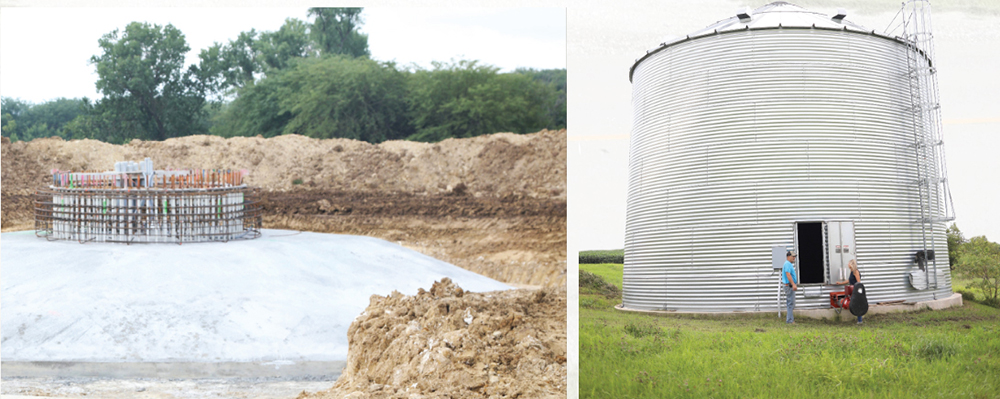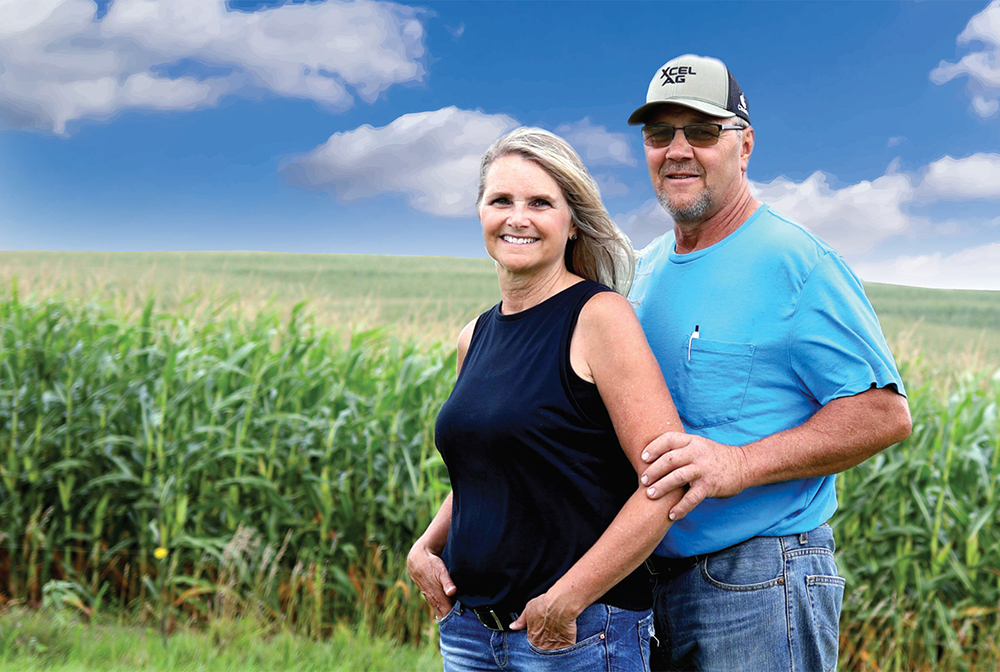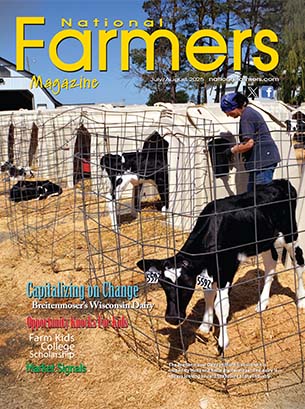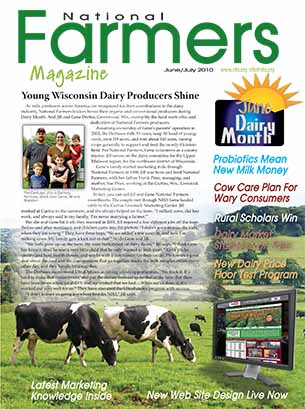
Corn and soybeans carpet the rolling cropland of the Dan and Marlene Rempe farm through the summer, a treat to an observer viewing the panorama. The Corning, Kansas, area farm belonged first to Dan’s grandfather, Bill, then Dan’s dad, John, took over. John and Dan operated together after Dan finished high school, until Dan started operating solo in recent years.
Some in Kansas start planting corn in March, but Dan waits for the April 15 to early May window. They use a 109-115 day maturing corn seed, and Dan moves straight into soybean planting after that, and does about a 50-50 split between the crops. This year, he planted 230 acres of corn and 201 acres of beans, and flips that back and forth from year to year. Cover crops double as feed for the Rempe cow-calf herd,and Dan puts in fall rye, and sudex, a sudangrass and sorghum hybrid, or sorgo (sweet sorghum), after the rye. The sudex and sorgo can be used in silage or be baled. Dan also puts in turnips and radishes as cover crops.
The Rempes appreciate their seed representative and his expertise, as he considers all the factors for the hybrids and what works best with the rolling hills, Dan said. “We take his advice a lot,” Marlene said. “We go to a meeting once a year, and hear what worked well and what they’re thinking about for next year.” Conservation weaves its thread through every aspect of the operation from soil practices to finances. Everything on the Rempe farm is planted no-till. “I have to rebuild terraces from a lot of rain last year. I had a dozer come in and do some scraping to repair damage from rains on the terraces,” he said.

Manure Yields Bushels
On the production side, the Rempes talk about one distinct practice they do for their crops, which gives them a production and a budget edge. Dan uses the hog manure from the hogs they raise to fertilize the fields. “I put a lot of hog manure on my crops. I don’t put anhydrous on my crops. That’s a big savings,” Dan said. One year, the Rempes couldn’t get the manure out at the right time for the crops, because the pumping company couldn’t get there then. Because of that, the Rempes sold it to neighboring farms, and that sparked their appreciation for Dan’s practice of using the manure, Marlene explained. “You make some good neighbors that way when they get to enjoy that fertilizer,” Marlene said.
Dan said the yield difference between manure and anhydrous is significant. He said their soil scientist mentioned that people grouse about the cost of manure, but if they would learn how to use it, they wouldn’t. Many farmers don’t realize the value until they use it and see the difference first hand. “ I can visibly see the difference between where anhydrous is versus where there was hog manure,” Dan says. “Where the field was fertilized with hog manure, the corn has lusher green stalks. You can see a difference in the field looking at it, the stalks of the hog manure places versus anhydrous. And the yield is 10-15 bushels an acre more with the hog manure versus anhydrous,” Dan said.
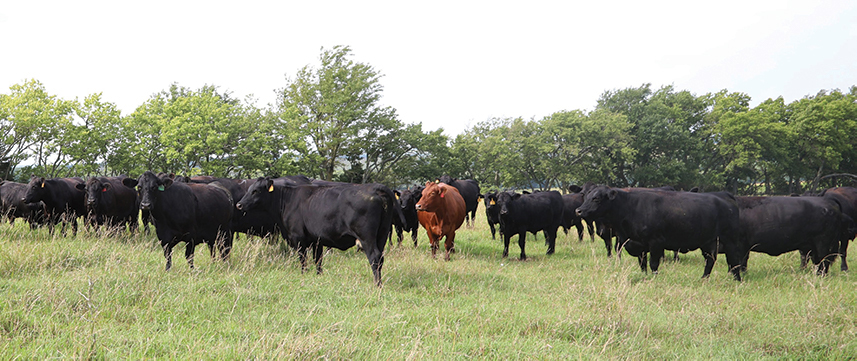
Dan started planting the sudex during the last five to eight years,and he likes that it helps to build soil. “You always have your regrowth again in the winter with the rye, so you either have to harvest, or chop for feed or spray it. Some people spray it, kill it and plant through it. I try to use it two ways, for grazing or for straw. It saves buying a lot of hay when you don’t have a lot of hay ground,” he said. It helps to blend the cattle herd diet, too. “It’s the same way with the bean fields; they pick through that, too, after harvest,” Dan said.
They have a 110-head cow-calf herd. A numbers person, Marlene handles book work for the operation. She uses QuickBooks, which is what their accountant uses. “He takes my files and the data goes right into his and it works well for us,” she said.
Crop Marketing
For marketing their crops, for Dan and Marlene, it’s Grain Marketing Plus all the way and contracts that their grain marketing specialist, Theresa Seiler, writes on their behalf, including hedge-to-arrive contracts and options, on occasion. “As long as we can stay in the top third, I don’t care,” Dan said. “She does well.” Under Theresa’s recommendation, the Rempes switched from one grain buyer to another. The new buyer doesn’t pick up on the farm like the previous one did, but the price difference is well worth Rempes taking the time to deliver. “If Theresa suggests something, we really use her judgment,” Marlene said. “That’s why we pay you guys.” “We’re too busy to sit here and watch the computer or check prices all the time. We let Theresa sell it and make more money that way than delivering only on rainy days,” Dan said

“I might be out in the tractor and Theresa calls and says this or that, and I say, great, go for it.” They use a marketing plan, too. “We try to sell half, then we work on through summer and later and sell more,” Dan said. “We let her sell what we can up to the insurance guarantee amount. Then we see how much more of a crop we’re going to have. You have the insurance for a reason, Theresa said.
The insurance guarantee, I don’t sell for less than that.” Marlene likes to go out farther in time on grain sales. “You make more money and if we’re going to defer it anyway, why sell it and let it sit there then defer it? Just go longer,” she said.
The Rempes’ success is a testimony to Grain Marketing Plus and National Farmers, too. One of their friends found out what the Rempes could do for grain marketing levels. “Then he wanted to do what we were doing,” Dan said.
Rempe Family
Dan and Marlene Rempe celebrated their 40th wedding anniversary on August 2, have four sons and eight grandchildren. Brian, and his wife, Sarah have three children and Curtis and Shawnae` have five children including the newest grandbaby born in August. Derek and Sean, the youngest sons got married this summer just 26 days apart; Derek and Shannon to each other,and Sean and Ann exchanging vows. Sean is interested in joining the farm operation. He particularly likes the hogs, although he likes farming overall.
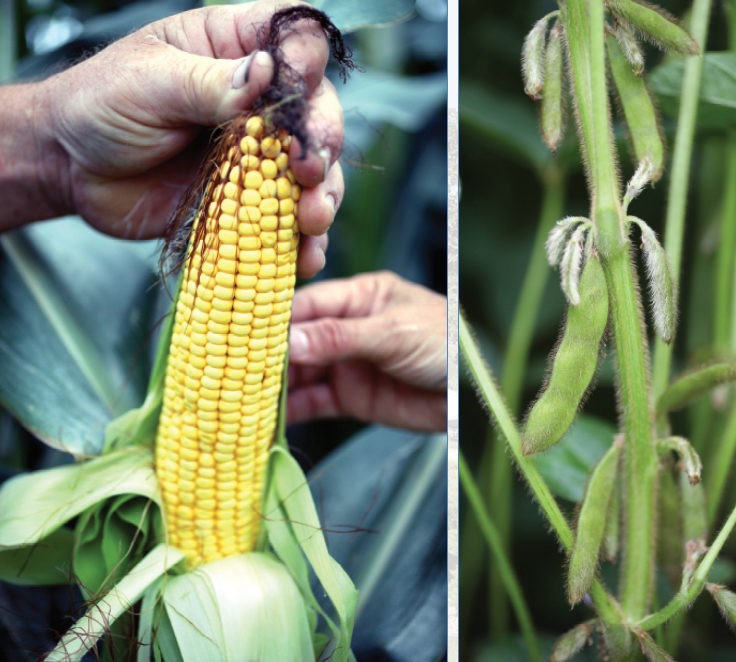
It’s All About the Storage
On-farm storage makes a marketing difference for the Dan and Marlene Rempe operation in Kansas. “When dad and I were working, we had 26,000 bushels of space in about five bins. Then we put up another bin for 24,000 bushels. It’s push button, automatic sweep and I don’t have to do all that work,” Dan said. “We’re getting ready to put up another 24,000. To be able to continue to [make technology] help with farm work,” Marlene said.“We’re kind of looking ahead. The new one goes up the first of November.
We’re excited about that.” When Rempes first started marketing through National Farmers, the grain representative suggested putting more grain storage on the farm, and they implemented that recommendation.“ You can make quite a bit more money sometimes,” Dan said. “The grain is a lot better in these newer bins. So, it’s saved crop condition having the newer bins.” As a result, that means no deductions for quality and better prices.
Marlene describes a discussion she and Dan had with a loan officer in farm financing. He said sometimes it’s detrimental to a farmer to have a grain bin. He asserted, if grain was stored at your local co-op, they would sell when it’s at a high price. If it’s sitting in a bin, people get $3.40 when it was $4 corn. Dan said,
“But I’ve got Theresa to call me and say we need to be pushing it out the door. I don’t have to wait in line to deliver at the coop. And pay the co-op fee.” Marlene said they told the loan officer, the situation he described is not their situation.
